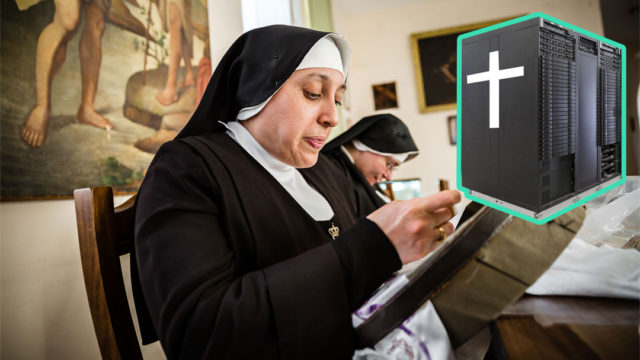A monastery in Mdina is replacing its dwindling population of cloistered nuns with prayer robots.
A shortage of women willing to devote themselves to an isolated monastic life means that convents are having to make an extra effort to keep their orders alive.
And while the monastery of the Augustinian cloistered nuns of St Catherine in Valletta has resorted to recruiting sisters from abroad, the Benedictine monastery of St Peter over in Mdina has adopted a more hi-tech approach.
The convent has received two state-of-the-art prayer robots called Orison 1 and Orison 2 from the Maltese Curia’s department of spiritual engineering.
On the outside, the pair of robots – who have taken the names Sister Remenda and Sister Maria Clotilda – look nothing like nuns, more closely resembling sleek black fridges. But behind the metal casing, a complex set of electronics and advanced intercessional software sends prayers straight to heaven.
“The advantages of a PrayBot over a flesh-and-blood nun are numerous,” said Professor Father Angelo Galea, who heads the department.
“Firstly, while the initial outlay of the robots is high, they end up being very cost-effective in the long run. A human nun needs around 500 gallons of minestra per month to function, while a PrayBot never needs to eat or drink,” he added, pointing out that the two robo-nuns will be powered by solar panels on the monastery’s roof.
“The robots are also more efficient in every way. Their algorithm scans both local and international news sites, as well as Facebook profiles, for causes that require prayer. These prayers are then compiled with a processing power of 20 teraflops and sent to God almost instantaneously using 5G.
“What a lot of people don’t know is that prayers recited by humans – whether they’re nuns or non-nuns – take an average of six years to arrive in the Almighty’s inbox, which is why oftentimes it seems as if He is ignoring them. It’s not that he didn’t want to save your terminally ill relative – it’s just that he wouldn’t have known about them till 2027. But now, this is no longer an issue and miracles can happen practically instantaneously, if God wills it.”
Prof. Fr Galea said the human nuns at St Peter’s had taken well to the shiny new members of their order.
“At first they were disconcerted by how silent Srs. Remenda and Maria Clotilda were – they only emit a barely audible hum, you see – so we programmed them to constantly mutter Hail Mary’s.”
The priest-scientist predicted that most of the work currently done by the clergy would be automated within a few decades.
“Whether it’s giving mass or listening to confessions, artificial religious intelligence in the future. And not just for the lower levels of the Church, either. Imagine having a Pope who never dies, instead of having to go through the hassle of electing a new one every few years.
“And hopefully, having robot priests will lead to a reduction in certain… indescretions… if you catch my drift.”










